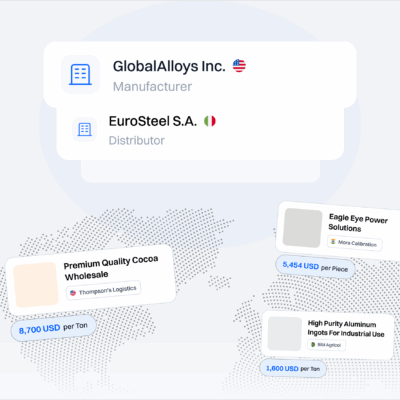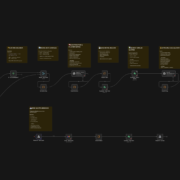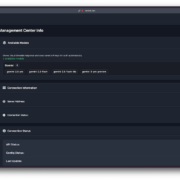In the ever-evolving world of open-source software, Redis, the popular in-memory key-value database, has made headlines once again. After abandoning its open-source roots in favor of proprietary licensing models, Redis has now returned to the open-source fold with the adoption of the GNU Affero General Public License version 3 (AGPLv3). While this move has been welcomed by some, it has also sparked significant debate within the open-source community. Let’s dive into the details of this decision, its implications, and the mixed reactions it has garnered.

Redis’ Journey from Open Source to Proprietary and Back
Redis’ licensing journey has been anything but straightforward. For years, Redis operated under the three-clause Berkeley Software Distribution (BSD) license, a permissive open-source license that allowed developers to use, modify, and distribute the software with minimal restrictions. However, in recent years, Redis, along with other open-source companies like Elastic, MongoDB, and HashiCorp, shifted away from open-source licensing in an attempt to protect their revenue streams from large cloud providers.
In 2023, Redis replaced its BSD license with the Redis Source Available License (RSALv2) and the Server Side Public License (SSPLv1). These licenses were designed to prevent cloud providers from offering Redis as a managed service without contributing back to the project. However, this move alienated many developers and led to the creation of Valkey, a fork of Redis backed by the Linux Foundation and major cloud vendors like Amazon Web Services (AWS), Google, and Oracle.
Redis 8: A Return to Open Source with AGPLv3
With the release of Redis 8, the company has officially returned to open-source licensing by adopting the AGPLv3. This license is approved by the Open Source Initiative (OSI) and is known for its copyleft provisions, which require any modifications or derivative works to be released under the same terms. Crucially, AGPLv3 also mandates that source code be made available to users who interact with the software over a network, effectively closing the so-called “Software as a Service (SaaS) loophole.”
Redis CEO Rowan Trollope explained the decision, stating that the company had hoped the SSPL would be accepted as a valid open-source license. However, this did not happen, leading Redis to return to an OSI-approved license. Trollope emphasized that the AGPLv3 strikes a balance between protecting Redis’ business interests and supporting the open-source community.
The Developer Backlash and the Rise of Valkey
Redis’ shift to proprietary licensing last year did not sit well with the developer community. The creation of Valkey, a fork of Redis, was a direct response to this move. Valkey has gained significant traction, with major cloud providers and enterprises adopting it as an alternative to Redis. This fork has proven to be a formidable competitor, offering similar functionality while remaining fully open source.
The rise of Valkey highlights the challenges open-source companies face when attempting to monetize their software. While Redis’ return to AGPLv3 may help rebuild trust with developers, it remains to be seen whether it can reclaim its position as the leading in-memory database in the face of Valkey’s growing popularity.
AGPLv3: A Step Forward or a Restrictive Compromise?
While the adoption of AGPLv3 has been praised by some, others argue that the license is overly restrictive. Peter Zaitsev, co-founder of Percona, an open-source enterprise consulting company, described AGPLv3 as “probably the most restrictive, popular open-source license out there.” Vadim Tkachenko, another Percona co-founder, added that many organizations avoid AGPL-licensed software due to its stringent terms on code reuse and distribution.
Critics also argue that Redis’ return to open source is more of a marketing maneuver than a genuine commitment to the open-source ethos. Amanda Brock, CEO of OpenUK, expressed skepticism, stating, “Redis is one of the biggest culprits in undermining open source’s fundamental free flow of value. Trust is hard to build and easy to lose.”
Redis 8: Performance Improvements and New Features
Beyond the licensing changes, Redis 8 introduces significant performance improvements and new features. The company claims that users can expect up to an 87% reduction in latency for certain commands. Additionally, Redis 8 now includes vector sets, a new data type designed to support AI workloads. These enhancements position Redis as a powerful tool for modern, data-intensive applications.
The Road Ahead for Redis
Redis’ return to open source with AGPLv3 marks a pivotal moment in the company’s history. While the move has been met with mixed reactions, it underscores the challenges open-source companies face in balancing commercial interests with community expectations. As Redis navigates this new chapter, its ability to rebuild trust with developers and compete with forks like Valkey will determine its future success.
In the words of Redis founder Salvatore Sanfilippo, “Writing open-source software is too rooted in me: I rarely wrote anything else in my career. I’m too old to start now.” Whether Redis can truly reconcile its commercial ambitions with its open-source heritage remains to be seen, but one thing is clear: the open-source community will be watching closely.









